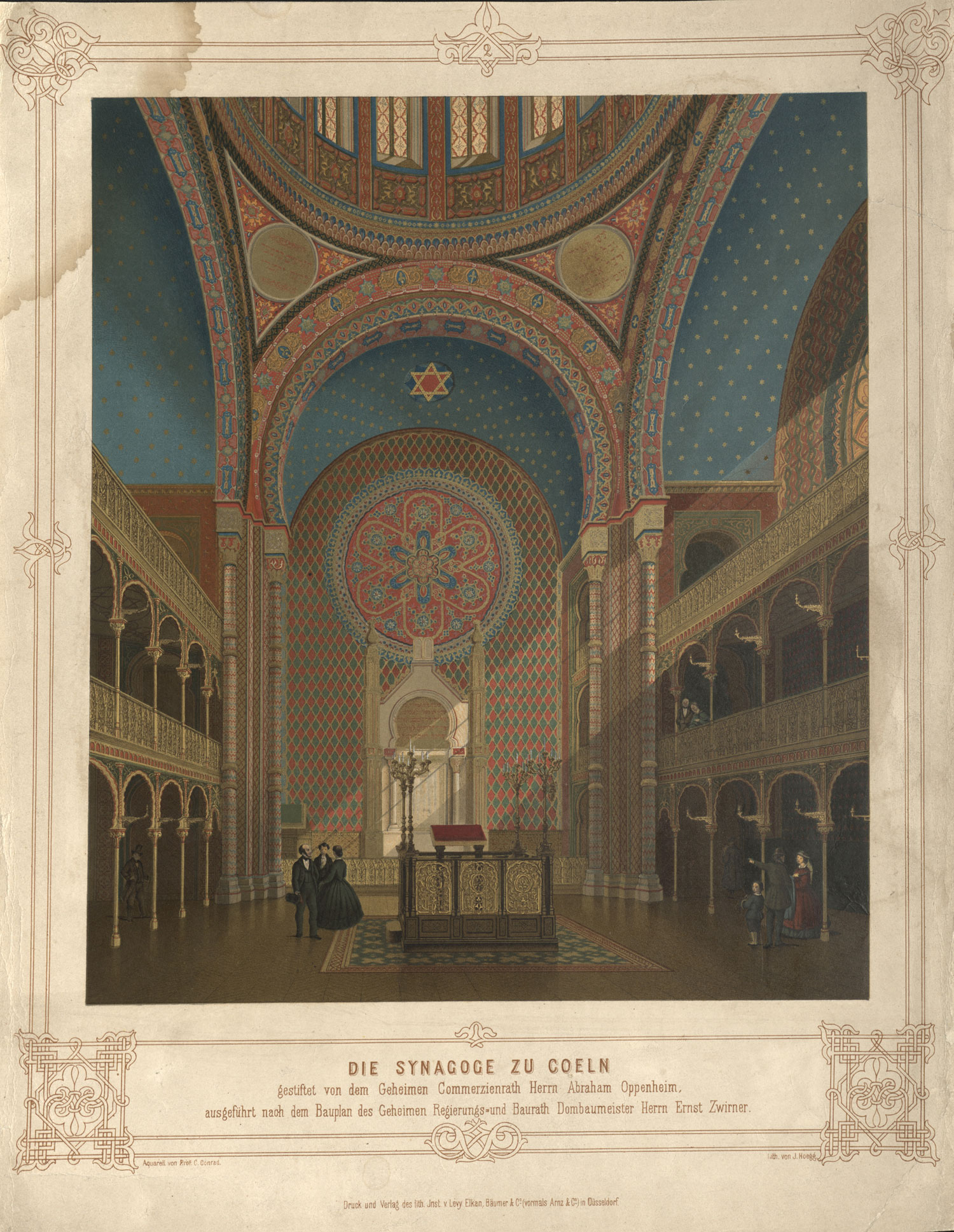This color lithograph of the interior of the Glockengasse Synagogue in Cologne reminds us how vividly colorful many 19th-century synagogue interiors were. Designed by Ernst Zwirner (1802–1861), architect of the famed Cologne Cathedral, the building depicted here was financed by the prominent Jewish banker Abraham Oppenheim (1804–1878) as a gift to the Cologne Jewish community. The cornerstone of the synagogue was laid on June 23, 1857; the building was dedicated on August 29, 1861.
The Moorish design is typical of many new synagogues built in Central Europe in the mid-19th century. The synagogue is notable, however, as the first example of a central plan dome synagogue building, with the bimah placed directly beneath the cupola, which measures 40 meters in height and 10 in diameter, and dominates interior and exterior views of the structure. As seen in this lithograph, the cupola, ceiling, and Moorish-style horseshoe arches were covered with golden stars painted on a blue background. Three interior walls boasted two women’s galleries each, supported by cast iron columns. Carl Emanuel Conrad’s view emphasizes the light streaming in from the windows above the galleries. At the front of the sanctuary, beneath a beautiful rose window, pillars made of Carrara marble flank the carved wooden ark. The synagogue accommodated 226 men and 140 women.
Almost immediately upon completion, it became clear that the Glockengasse Synagogue was not large enough for the entire Jewish community of Cologne. An additional synagogue, located on the Roonstrasse, was built soon after. The Glockengasse Synagogue, however, continued to be used and loved by the Jewish community until its destruction during Kristallnacht on November 9, 1938.
